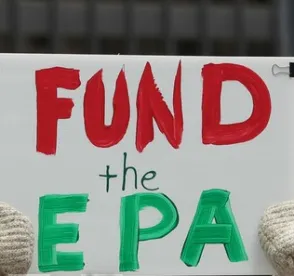The EPA’s popular Brownfields program received a substantial funding increase in the Infrastructure Investment and Jobs Act. More specifically, the Brownfields program was funded with $300 million per year for five years ($1.5 billion), which is over the former statutory cap of $200 million per year. Congress has never appropriated to EPA the full statutory cap.
The $1.5 billion is broken down into $1.2 billion for Brownfield Competitive Grants and $300 million for Brownfield Categorical Grants. In addition to the increased annual funding, the act provides that the EPA can provide larger grants than it could in the past and not require state matching contributions as otherwise required.
Most of the grant programs require a proposal to be submitted by July 2022 and awards will be issued in November. The Revolving Loan Fund applications were due to the EPA in April and will be awarded in August. The Technical Assistance, Target Brownfield Assessment grants are awarded on a rolling basis with the first round awarded last month.
The following is the breakdown of the $1.5 billion in Brownfield funding to be awarded over the next five years.
-
Multipurpose Grants - $150 million
-
Communities, states, tribes and nonprofits to plan, assess and cleanup sites
-
Up to $10 million per grant
-
-
Assessment Grants - $600 million
-
Communities, states, tribes and nonprofits to assess sites
-
Up to $10 million per grant
-
-
Cleanup Grants - $160 million
-
Communities, states, tribes and nonprofits to cleanup sites
-
Up to $5 million grants
-
-
Revolving Loan Fund (RLF) Grants - $150 million
-
For communities, states, tribes and nonprofits to provide loans and subgrants for cleanup of contamination and revitalization of Brownfield sites
-
Up to $10 million grant
-
-
Job Training Grants - $30 million
-
Supports nonprofits, local governments, and other organizations to recruit, train, and place unemployed and under-employed residents of areas affected by the presence of Brownfield sites
-
Up to $1 million per grant
-
-
Cooperative Agreements to State and Tribal Programs - $300 million
-
For states and tribes to build response program capacity, oversee Brownfield cleanups and conduct limited site assessment and cleanup activitie
-
Up to $60 million per year (shared among states, tribes and territories)
-
Awarded on an annual basis
-
-
Technical Assistance, Targeted Brownfield Assessments - $110 million
-
Goes to communities in direct contracts and cooperative agreements to provide communities with technical assistance to adapt to changing climate and remove barriers to safe and sustainable property reuse
-
Awarded on a rolling basis
-
Brownfields is a comparatively small program with an outsized performance record and reputation. The EPA reports there is currently a return of $20.13 for every dollar expended in support of Brownfield projects. The significant funding increase, while not quite double prior authorizations, may present a management challenge to the EPA, at least in the short term, to be able to scale up to award the significantly increased amount of funds and then oversee potentially larger and more grants.
Grant Proposal Support
In the past, the amount of Congressional funding has meant that less than half of grant proposals submitted to the EPA received funds. The EPA’s Brownfields program uses well-run grant competition process. In the past, the competition for the limited amount of fund pushed grant seekers to propose better projects and seek strong state, local and private support for their projects. The EPA provides a considerable amount of guidance, as well as funding, for grant preparation technical support to grant seekers.
With this funding boost, the EPA will be able to increase the level of technical support for communities’ grant proposals. It will be interesting to see in November, and in the future, how more funding, the increased grant limits, and the removal of cost-sharing changes the number and types of grants the EPA issues in comparison with prior years. Over time, it will be possible to see the impact more grants and larger grants have had on communities and overall performance of the Brownfields program.
Recently, it has been reported that some are advocating for significant changes in the Brownfields program beyond the funding increase. During a December 21, 2021, webinar sponsored by the National Brownfields Coalition, U.S. Rep. Dan Kildee of Michigan said he thought Brownfield funding should be directed toward “cleanup without the immediate prospect of redevelopment…” and he favored funding the “most distressed and least likely to be developed places…” which he acknowledged represents a change. Another speaker recommended the creation of a new Brownfield funding program to address those sites. Another speaker encouraged Congress to go back to the previously existing Brownfield tool and to restore the Brownfield tax incentive that expired in December 2011 that allowed environmental cleanup costs to be deducted in the year the costs were incurred rather than being capitalized over time.
Chesterton’s Fence
This call for a change in direction merits consideration of what affect the changes would have on the Brownfields program. One way to consider the impact is to consider the principle of Chesterton’s Fence. G.K. Chesterton in his 1929 book, The Thing, describes how a reformer notices something like a fence across a road and fails to see the reason for its existence, so proposes to have the fence removed. A more thoughtful reformer might employ second-order thinking, the contemplation of the consequences of the consequences. It is wise to determine why the fence was placed where it was before removing it. Failing to understand the purpose of the fence’s placement risks doing more harm than good.
Another approach to changing the focus of the Brownfields program or creating a new program in order to address the “most distressed and least likely to be developed properties” would be to look to the existing Superfund program. The Superfund program remediates contaminated property based on risk. Under the Infrastructure Act, the EPA was provided with more than 10 times the federal funding (i.e. $3.5 billion) that the Brownfields program received and the Superfund tax was reinstated. In addition, the EPA has the ability to compel and recover remediation costs for parties legally responsible for contamination.
Redevelopment does occur on Superfund sites. Redevelopment plans for a site can help in a number of ways to focus the cleanup activities and the parties to achieving the desired end. Redevelopment and return of Superfund sites to a wide range of uses have been encouraged as part of the EPA’s long-standing Superfund Redevelopment Initiative. Yet the Superfund program does not require redevelopment at any stage of the program. There is no fence.




 />i
/>i

